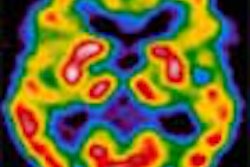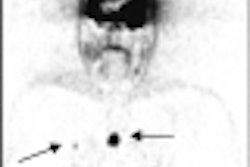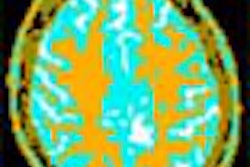Nuclear medicine physicians and technologists have been scrambling following Bracco Diagnostics' announcement that its imaging pharmaceuticals Kinevac and Choletec would not be readily available for perhaps another year -- until the company finds another manufacturer.
Kinevac (sincalide) in particular will be missed. The synthetic cholecystokinin is distributed exclusively by Princeton, NJ-based Bracco, and is used to force the gall bladder to contract during nuclear imaging in order to determine ejection fractions. This is particularly useful for surgeons determining whether to operate on patients with acalculous cholecystitis.
Choletec (mebrofenin as the transport medium for Tc-99m) is the radiopharmaceutical used to image the gall bladder's contraction. Its availability is less of an issue because Hepatolite (technetium Tc-99m disofenin), distributed by Biodex of Shirley, NY, remains as a substitute for Choletec.
Although Bracco distributes both Kinevac and Choletec, they were manufactured for many years by Bristol-Myers Squibb, which has quit making both agents.
Efforts to determine the reasoning behind Bristol-Myers Squibb's decision to close down the plant that made Kinevac and Choletec were unsuccessful. A spokesperson said the company was no longer in the "diagnostics business," although BM-S has just acquired DuPont Pharmaceuticals, which manufactures imaging agents Cardiolite and Definity.
Bracco has been cutting back on sales of Kinevac in order to ensure that it will be available to patients who really need the product, according to Kevin Brooks, Bracco's nuclear medicine director.
"We rationed only to the radiopharmacy networks, knowing that they had the greatest reach," Brooks said. "We terminated sales of Choletec to direct hospitals, so that we can help the industry by providing it to the radiopharmacies, who can get one vial to more places than an individual hospital.
"The same thing applied to Kinevac as well. Once we realized there was going to be an inventory interruption, we tried to ration it to as many people as possible."
Brooks said BM-S informed Bracco four years ago that it would have to find another vendor.
"Please know that Kinevac is not being discontinued," said Brooks. "We have encountered delays in the technology transfer from one manufacturer to another, which has created an interruption in product supply.
"[Bristol-Myers Squibb] said that they were going through some consolidation of their manufacturing, part of which had to do with the nuclear medicine products they manufactured for us. We had to find another vendor, which we have, and we've been in the process of transferring all of our [BM-S] products to other contract manufacturers."
Brooks declined to name the new manufacturer until the technology transfer is complete, and until Bracco can identify it as the filed company with the FDA. Changing manufacturers requires FDA updates on new quality control and other regulations, much as building codes have to be upgraded when a house is remodeled.
"The Kinevac NDA [new drug application] is more than 20 years old and required an update to some of the manufacturing and testing processes to reflect 2001 FDA standards," Brooks said. "In doing this, unfortunately, we experienced costly delays -- some of which were unexpected and outside our control -- that have created the current Kinevac product shortage. We recognize the clinical importance of this product. We continue to work toward completing our technology transfer and submission of the supplemental new drug application to the FDA. We are working with the FDA regarding the Kinevac situation."
There is no synthetic peptide substitute available in the U.S. Although a Pharmacia-Upjohn product called Ceruletide (a cholecystokinin analog) is reportedly approved in Europe, Bracco's head of medical and professional services, Marion Meeks, PhD, said "This option for the U.S. market presented too many obstacles and was in the end impossible for us to implement."
Kinevac will probably not be available again until the fourth quarter of 2002. Brooks said it is largely out of Bracco's control and dependent upon FDA review. He acknowledged that Kinevac's lack of availability for the next year will likely have a negative impact on sales when it comes back on the market.
Substitutes for Kinevac are mostly fatty meals, a standardized version of which was suggested as a possible solution by the Society of Nuclear Medicine. Others have suggested (perhaps whimsically) candy bars, Kentucky Fried Chicken, or Big Macs. The problem with these alternatives is that gall bladder contractions can't be accurately timed.
As far as Dr. Abass Alavi, chief of nuclear medicine at the Hospital of the University of Pennsylvania in Philadelphia is concerned, the brouhaha over Kinevac is a waste of energy. He and colleagues published an article in the Journal of Nuclear Medicine describing the use of morphine augmentation in cholescintigraphy.
"Morphine makes the sphincter of Oddi contract, and then you force the bile to go into the gall bladder," Alavi said. "We don't think there's a need for CCK."
"Morphine is excellent for distinguishing obstructed cystic duct as is seen in acute cholecystitis from patent cystic duct," said Dr. Naomi P. Alazraki of the division of nuclear medicine at the Atlanta VA Hospital and Emory University. "It isn't, however, used for generating the image data for calculating gall bladder ejection fraction as is cholecystokinin. In our practice, we use cholecystokinin relatively rarely; we use morphine much more frequently."
As for a Choletec shortage, Alavi said, "There is no significant difference between (Choletec and Hepatolite), and therefore they are equal."
By Robert BruceAuntMinnie.com contributing writer
October 22, 2001
Copyright © 2001 AuntMinnie.com



















